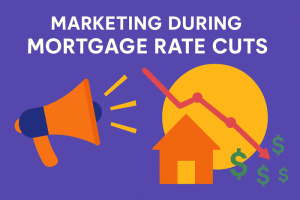Summary
This article highlights strategies for creating mortgage advertisements that comply with industry regulations. Learn how to market effectively while staying compliant. By the end, you’ll know how to create compelling and lawful ads.
By running ads for your mortgage business, you can earn more clients and get noticed. However, it’s vital that you follow all state and federal mortgage advertising rules and that you are using compliant mortgage advertising before launching your next campaign.
Is your head spinning at all the regulations you’ll have to account for? Following all mortgage advertising rules while making great content can be a hassle. Fortunately, there are a few simple ways to avoid fines and compliance issues.

Know the Rules: Compliant Mortgage Advertising
The Truth in Lending Act (TILA) is the main regulation to follow. It ensures your customers receive accurate information on the costs and terms of credit. Make sure you know TILA rules backward and forward before running any ads. Even what seems like a small mistake can tarnish your reputation and leave you facing fines or other penalties.

Be Honest
For compliant mortgage advertising always be honest and transparent in your ads. Also, avoid using misleading terms or overpromising. If you are advertising a low interest rate, mention any conditions that apply. Avoid jargon and industry lingo. Use plain terms that everyone can understand. This way, you can avoid any accusations that you’re misleading people.
Include Required Information
If you mention things like interest rates, monthly payments, or the length of the loan, you have to include additional information. These phrases are called “triggering terms.” Whenever you use one, you’ll also have to provide:
- The annual percentage rate (APR)
- The terms of repayment
- Any other fees or costs
That’s a lot of info to cram into one ad. Before you know it, your fun content will sound more like a legal disclaimer. With that in mind, it’s important to follow this next tip:
Don’t Get Too Detailed
Sometimes, it’s best to be vague because the more specific your ads are, the more disclaimers you’ll have to provide. Giving specifics about things like interest rates can be especially tricky.
Instead of mentioning a set rate, try “Contact me to see whether you are eligible for a lower interest rate.” You didn’t make any promises or offer any terms. The message simply encourages the viewer to connect with your business and find out what loan you can offer.
Keep It Simple
Use simple and easy-to-understand language. Avoid jargon or complex terms that might confuse potential customers. Your goal is to communicate clearly so that your audience understands the information you are presenting.
Encourage Prompt Action
Always close things out with a direct call to action and encourage people to provide their contact information or reach out to your team. You want to capitalize on their interest while your message is fresh in their minds. When people follow up, you can delve into the disclaimers and other legal aspects of mortgages.
Use a CRM
A customer relationship management (CRM) platform can help you follow up with leads you acquire during your marketing campaigns. But how does this help with mortgage advertising rules? The answer is quite simple because the best mortgage CRM systems have built-in tools to help you keep your follow-up outreach compliant and by the book.
You need a platform built for mortgage pros, and BNTouch is just such a solution. Our user-friendly system can automate marketing, promote compliance, and help you earn more business. Schedule a demo today.
Key Takeaways
- Understand Compliance Rules
Familiarize yourself with industry advertising standards to avoid violations.
- Transparency Builds Trust
Clearly present rates, terms, and disclaimers to maintain credibility.
- Creative But Compliant Messaging
Use engaging content that aligns with legal requirements to attract clients.
Commonly Asked Questions
- Why is compliance important in mortgage advertising?
It prevents legal issues and builds client trust through transparency.
- What should be included in compliant ads?
Disclaimers, accurate terms, and transparent rate details.
- How can you stay creative within compliance rules?
Focus on unique messaging styles while adhering to required regulations.
- What is the main risk of non-compliance?
Legal penalties and potential damage to brand reputation.







